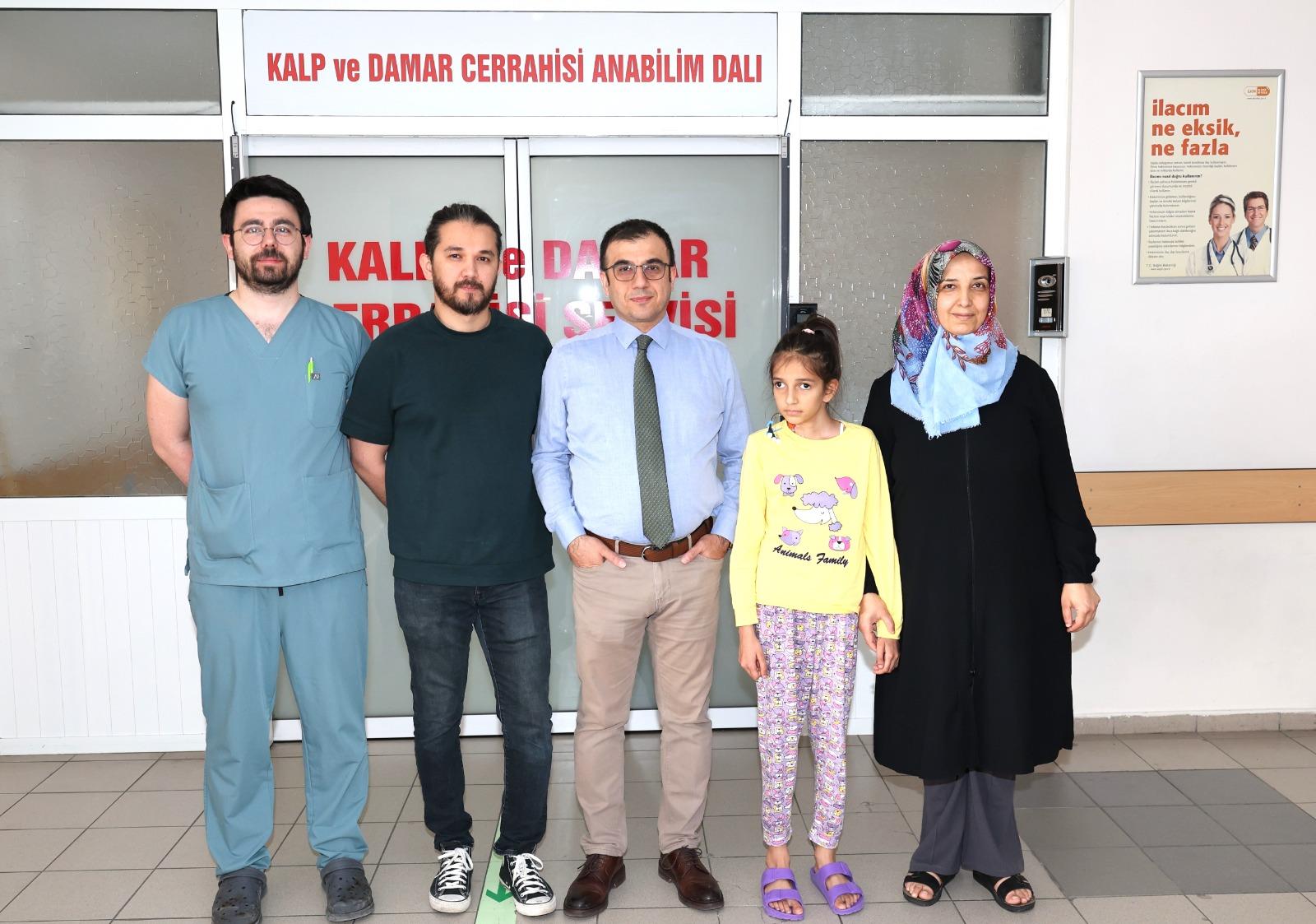
A 9-year-old patient with mitral valve regurgitation regained her health following a specialized mitral valve repair procedure performed by Assoc. Prof. Rifat Özmen, a faculty member at the Department of Cardiovascular Surgery/ERU Faculty of Medicine.
Assoc. Prof. Rifat Özmen provided information about the patient who underwent mitral valve repair. He said: “Our 9-year-old patient was referred to us by the Pediatric Cardiology Department of Erciyes University. Due to a previous infection and valve prolapse, the patient had mitral valve regurgitation, and we decided that surgery was necessary. The patient was subsequently admitted for preoperative preparations. Our primary plan for the mitral valve regurgitation was to repair the valve.”
Triangular Resection and Neochord Implantation Performed
Assoc. Prof. Rifat Özmen said: “During the surgery, a perforated area—meaning a hole caused by infection—was detected on the posterior leaflet of the mitral valve, and this area was removed using a triangular resection technique. The excised section was sutured together. A neochord implantation was performed in the area causing the valve prolapse using a special material that functions as the supporting structure of the valve, known as chordae. Finally, ring annuloplasty was applied to stabilize the annulus region of the valve. After confirming with a water test that the valve leakage had been completely eliminated, the surgical procedure was concluded.”
Heart's Contractile Strength is Preserved After Mitral Valve Repair
Assoc. Prof. Rifat Özmen stated that, in cases of mitral valve regurgitation, the primary recommended treatment for eligible patients is valve repair. He said, “Various techniques are used for this purpose. Thanks to the repair, patients only need to use warfarin for a short period of about 3 months, after which the medication can be discontinued, preventing the need for lifelong drug use. Additionally, the risk of bleeding problems related to warfarin use is also eliminated in these patients. More importantly, the contractile strength of the heart is preserved, contributing positively to long-term patient survival. The valve structure is also protected against potential infections. Since the patient’s natural valve is preserved, the risk of clot formation on the valve is significantly reduced. Mitral valve repair is the preferred treatment method for eligible patients of all ages and genders. Medical guidelines also recommend valve repair as the first-line treatment if the patient has suitable features for repair.”
ERU Hospital is One of the Few Centers in the Country Where Mitral Valve Repair is Routinely Performed
Assoc. Prof. Rifat Özmen stated that, due to the specialized nature of the procedure, mitral valve repair in Türkiye is performed only in certain centers by teams specifically trained for this purpose. He said: “In this regard, our university hospital is one of the few centers in the country where mitral valve repair is routinely performed. With the successful repair of the mitral valve, our patient will be protected from the side effects associated with long-term warfarin use and will enjoy a more comfortable life in the future.”
He also expressed his gratitude, saying, “I would like to thank the Department of Cardiology and the Division of Pediatric Cardiology at our university, my colleagues at the Department of Cardiovascular Surgery, and the hospital administration for their support during my routine mitral valve repair procedures. I wish our patient a full recovery.”











